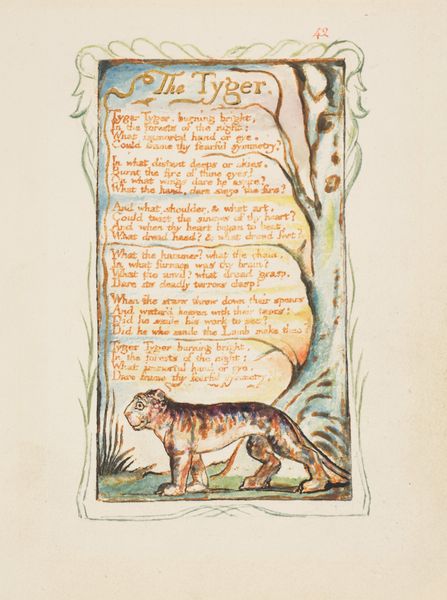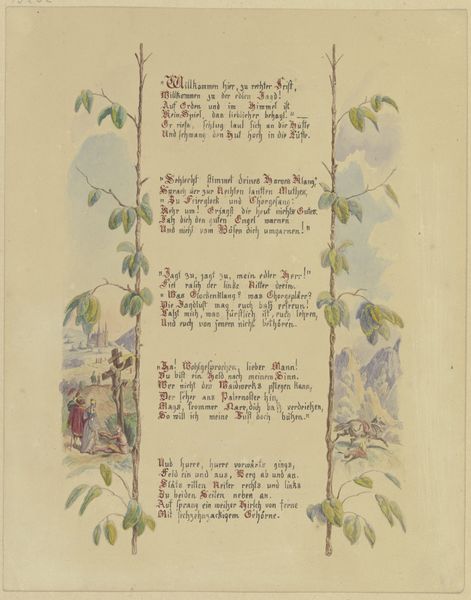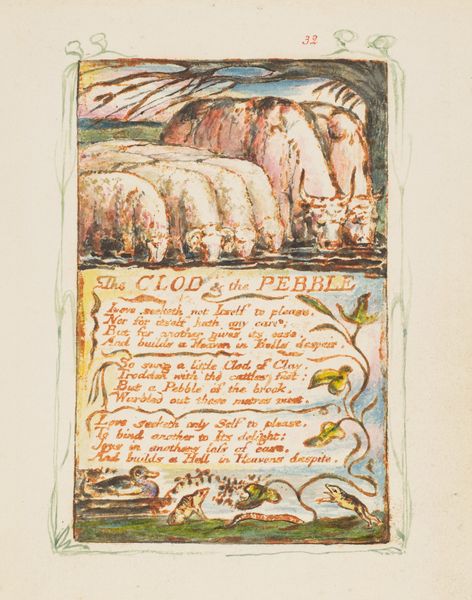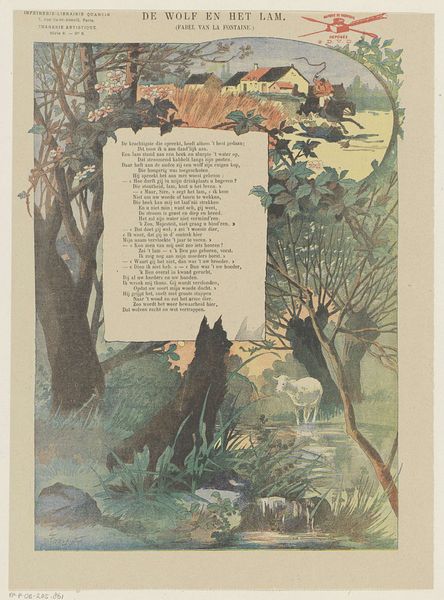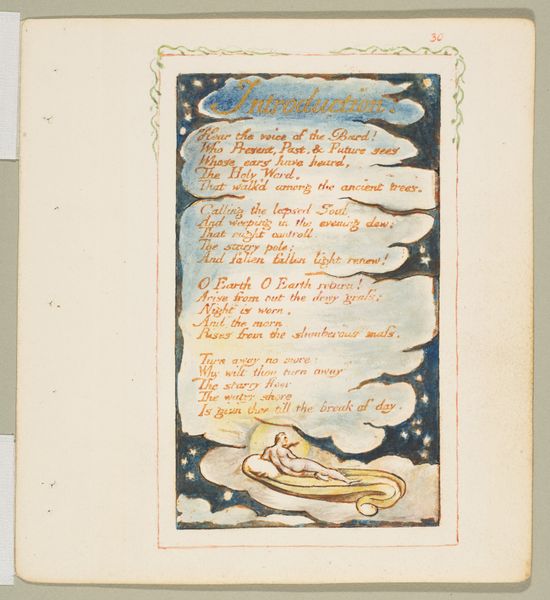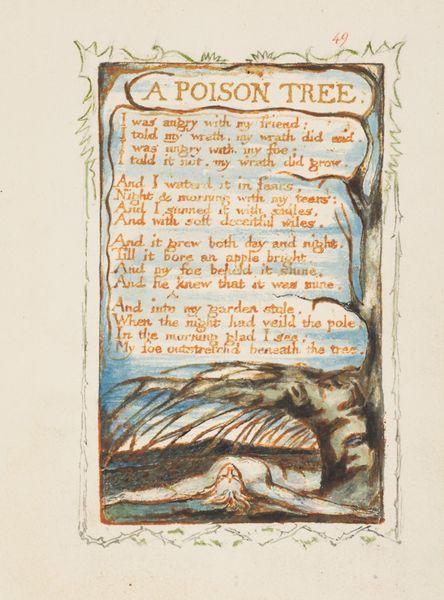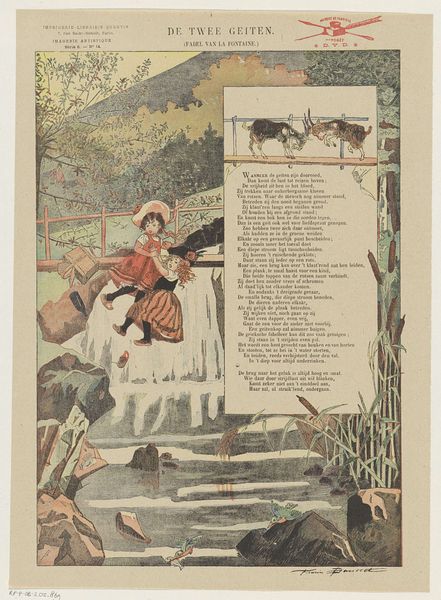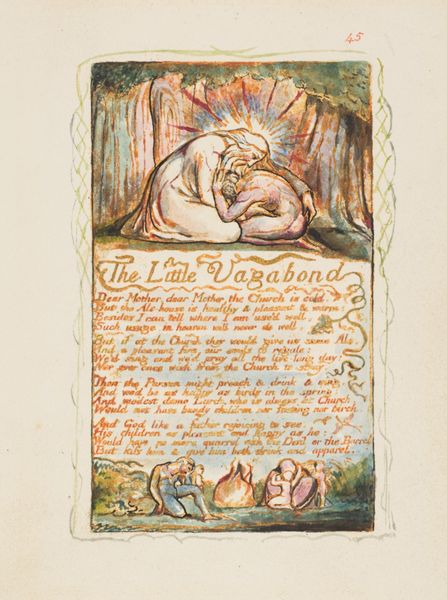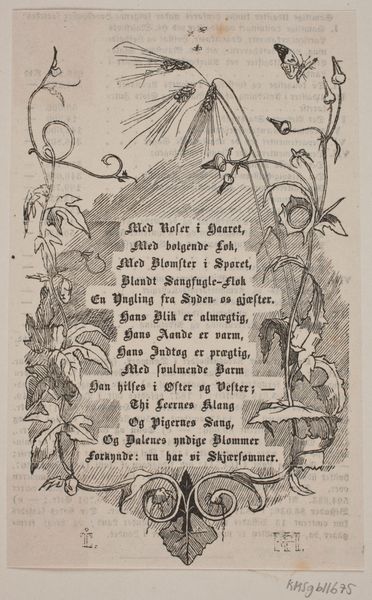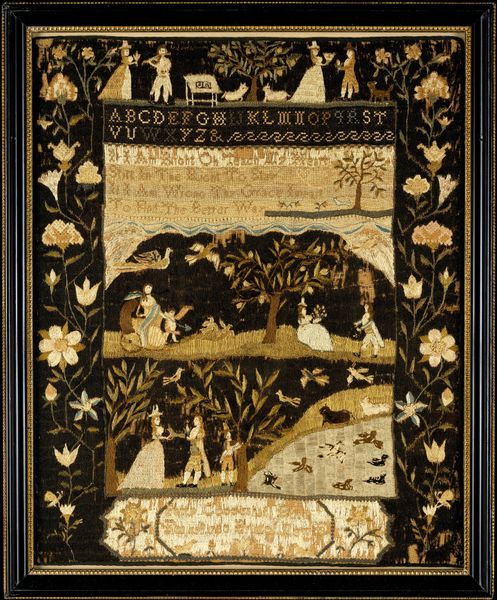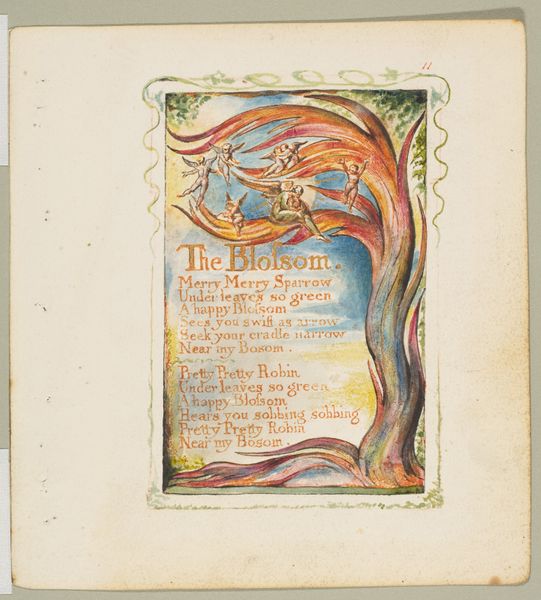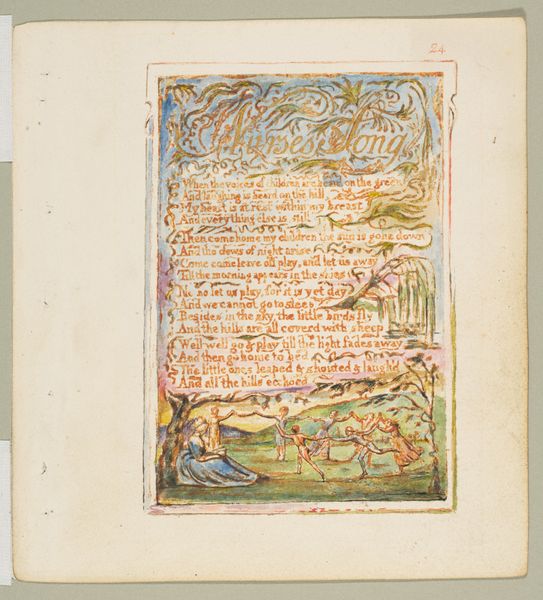
drawing, paper, ink
#
drawing
#
fairy-painting
#
narrative-art
#
arts-&-crafts-movement
#
figuration
#
paper
#
ink
#
geometric
#
line
#
symbolism
Copyright: Public Domain: Artvee
Curator: Walter Crane's "The Hare and the Tortoise, The Hares and the Frogs," made in 1908, rendered in ink on paper... it strikes me as a wonderfully busy piece. All the intricate line work and the borders call back to illuminated manuscripts, and I’m struck by how effectively it balances text and image. How do you interpret the choices Crane made in terms of materials and their presentation? Editor: It's fascinating how Crane combines image and text so seamlessly. It seems intentional, making it a holistic object rather than just an illustration of a story. I am intrigued how these choices reflect and promote the Arts and Crafts ethos, which this artwork embodies. Curator: Exactly. Let's consider the context: the Arts and Crafts movement championed the handmade, reacting against industrialization. What is it about the ink and paper, and particularly the *drawing* aspect that positions this work within the Arts and Crafts movement? Think about production. Editor: Well, ink and paper are relatively accessible, allowing for wider participation in artmaking. And the linework! The dedication to detail, even in what might be considered a children's illustration, elevates the craft and rejects mass production. So you're saying this work elevates craftsmanship to high art status? Curator: Precisely! Consider the social implications. By emphasizing handcraft and accessible materials, Crane challenges the established art world which favored oils on canvas, often produced for and consumed by the wealthy. He is, in effect, democratizing art making, promoting art as a process for everyone. Editor: So, by looking at the materials and technique, we uncover the social commentary embedded in this seemingly simple illustration. The "means" really is the message! That's a great lesson in deconstructing a piece of art! Curator: Absolutely! Analyzing the "how" and "what" reveals the "why". Considering Crane’s material choices and modes of production adds depth to our understanding of his work, moving beyond just aesthetic appreciation and diving deep into his sociopolitical motivations.
Comments
No comments
Be the first to comment and join the conversation on the ultimate creative platform.
